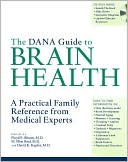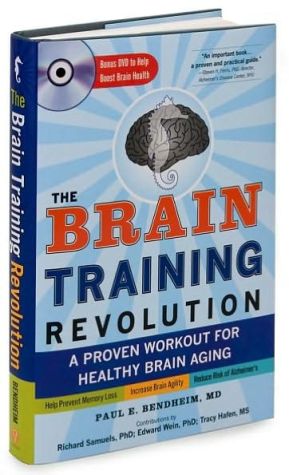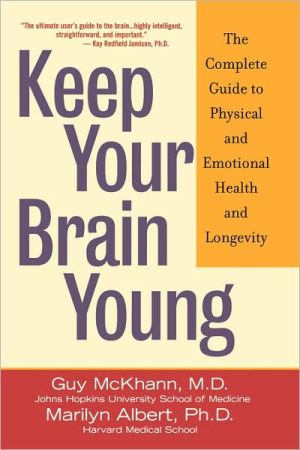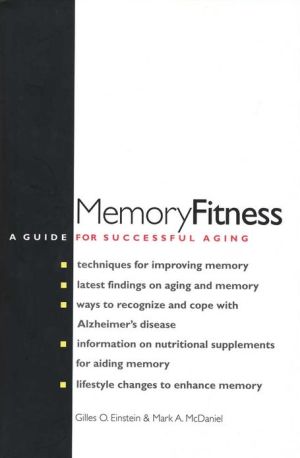Dana Guide to Brain Health: A Practical Family Reference from Medical Experts
Search in google:
A child crashes to the ground from the monkey bars head-first. A high school student prepares for months to take the SAT. A grandmother slowly slips away from her family through the deadly progression of Alzheimer’s Disease. Whether we realize it or not, the importance of brain health to our daily lives goes far beyond just being able to walk and talk. The Dana Guide to Brain Health offers the first comprehensive home medical reference book on the brain, providing an unparalleled, authoritative guide to improving the fitness of our brains and, ultimately, enriching our lives. With contributions from over one hundred of the most prominent scientists and clinicians in the United States, The Dana Guide to Brain Health is an extensive and wholly accessible manual on the workings of the human brain. This richly illustrated volume contains a wealth of facts and advice, on simple yet effective ways to take care of our brains; the intimate connection between brain health and body health; brain development from the prenatal period through adulthood; and how we learn, remember, and imagine. The brain is far too important to be excluded any longer from our daily health concerns. The Dana Guide to Brain Health remedies this oversight with a clearly written, definitive map to our brains that reveals how we can take care of them in order to sustain a long and rich life.
Using Our Heads: A Foreword by William SafireIntroduction: Welcome to Your BrainHow to Read this BookContributorsYour Brain: A Primer Part I. Understanding Your Brain1. How to Think About the Brain2. How We Know: Learning the Secrets of the Brain3. Basic Brain Care: Protecting Your Mental Capital4. The Brain-Body Loop Part II. Your Brain Through Life5. Prenatal Development6. Brain Development in Childhood7. The Adolescent Brain8. The Brain in Adult Life and Normal Aging Part III. The Healthy Brain9. The Body Manager B1 The Major Senses: Sight, Hearing, Taste, Smell, and Touch B2 Body Regulation B3 Basic Drives: Eating, Sleeping, and Sex B4 Movement, Balance, and Coordination B5 Pain Perception B6 Consciousness 10. Emotions and Social Function B7 Emotions B8 Inhibition and Control B9 Temperament B10 Attention and Motivation 11. Learning, Thinking, and Remembering B11 Decision Making and Planning B12 Intelligence B13 Learning and Memory B14 Speech, Language, and Reading B15 Visualization and Navigation B16 Creativity, Talents, and Skills Part IV. Conditions of the Brain and Nervous System 12. Conditions That Appear in Childhood C1 Dyslexia C2 Attention Deficit/Hyperactivity Disorder C3 Mental Retardation C4 Cerebral Palsy C5 Autism C6 Metabolic Diseases C7 Neurofibromatosis C8 Hydrocephalus C9 Spina Bifida C10 Tumors of Childhood 13. Disorders of the Senses and Body Function C11 Sleep Disorders C12 Narcolepsy C13 Epilepsy and Seizures C14 Dizziness and Vertigo C15 Seeing Problems C16 Hearing Problems C17 Smelling and Tasting Problems C18 Autonomous Disorders C19 Chronic Fatigue Syndrome 14. Emotional and Control Disorders C20 Depression C21 Anxiety and Panic C22 Social Phobia (Social Anxiety Disorder) C23 Obsessive-Compulsive Disorder C24 Bipolar Disorder C25 Schizophrenia C26 Borderline Personality Disorder C27 Eating Disorders C28 Post-Traumatic Stress Disorder C29 Substance Abuse and Addiction C30 Alcoholism C31 Violence and Aggression C32 Suicidal Feelings 15. Infectious and Autoimmune Disorders C33 Multiple Sclerosis C34 Shingles/Herpes Zoster C35 Neurological Complications of AIDS C36 Lyme Disease C37 Meningitis C38 Viral Encephalitis C39 Creutzfeldt-Jakob Disease C40 Systemic Lupus Erythematosus 16. Disorder of Movement and Muscles C41 Parkinson's Disease C42 Parkinsonism Plus C43 Tremors C44 Dystonia, Spasms, and Cramps C45 Tourette's Syndrom and Tics C46 Ataxia C47 Huntington's Disease C48 Peripheral Neuropathy C49 Guillain-Barre Syndrome C50 Bell's Palsy C51 Myopathies C52 Myasthenia Gravis C53 Amyotrophic Lateral Sclerosis 17. Pain C54 Headache C55 Migraines C56 Back Pain and Disk Disease C57 Chronic Pain C58 Trigeminal Neuralgia 18. Nervous System Injuries C59 Ischemic Stroke C60 Hemorrhagic Stroke C61 Brain Trauma, Concussion, and Coma C62 Spinal Cord Injury C63 Paraneoplastic Syndromes C64 Brain Tumors C65 Nutritional Disorders C66 Chemicals and the Nervous System 19. Disorders of Thinking and Remembering C67 Alzheimer's Disease C68 Amnesias C69 Dementia C70 Trouble with Speech and Language C71 Apraxias C72 Agnosias Glossary Appendix A: Drugs Used to Treat the Brain and Nervous SystemAppendix B: Suggested ReadingAppendix C: Resource GroupsThe Dana Alliance for Brain InitiativesThe European Dana Alliance for the BrainAbout the EditorsIndex







